This is the story of a son in ancient India who killed his father for no other reason than uncontrolled ambition. In the royal dynasties of India, the killing of family members and family rivals is a lot more common than you might think. However, the Haryanka dynasty succession killing is unique because the son, the future King Ajatashatru, had absolutely zero competition for the throne. Ajatashatru’s murder of his father left him feeling immense remorse and he tried hard to find solace through the wisdom of the Gautama Buddha, the first Buddha, who lived from the 5th to 4th century BC. This is the dramatic story of King Ajatashatru of the Haryanka dynasty, whose betrayal of his father continues to shake the cultures of the Indian sub-continent.
Ajatashatru’s Background And Popular Indian Culture
King Ajatashatru (c. 492 to 460 BC) was the second king of the Haryanka dynasty (544–413 BC) which itself was the second ruling dynasty of the Magadha, a powerful kingdom of ancient India, which succeeded the mythological Barhadratha dynasty.
The Magadha Haryanka dynasty came into the popular consciousness of the Indian sub-continent in the 20th century AD when Bollywood movies about the life of the famous Vaishali courtesan “Amrapali” began to appear. One of the critically acclaimed films was made by Lekh Tandon and released in the year 1966, which featured the superstar Vyjayanthimala, as the eponymous heroine, and Sunil Dutt as King Ajatashatru. The story of Amrapali is based mainly on Buddhist legends and intertwined with the sagas of both Ajatashatru and his father Bimbisara, both of whom supposedly dated this famous courtesan.
However, experts are divided on the question of the historical existence of Amrapali. Nonetheless, King Ajatashatru was very much a historical figure who was probably a contemporary of the Gautama Buddha and Lord Mahavira (6th-5th century BC; the founder of Jainism). Ajatashatru’s story, which is the story of the Haryanka dynasty, is one of the most fascinating tales in Indian history.
King Ajatashatru’s life has parallels with another Magadhan king from the pre-Christian era, Ashoka the Great . As young men, both of them were consumed with the desire to gain the throne from their fathers. And both of them committed unmentionable crimes to gain the throne. Initially, they were warmongers who continuously raided and plundered other regions. But later these two ambitious men also regretted their crimes and turned to Buddhism for redemption.
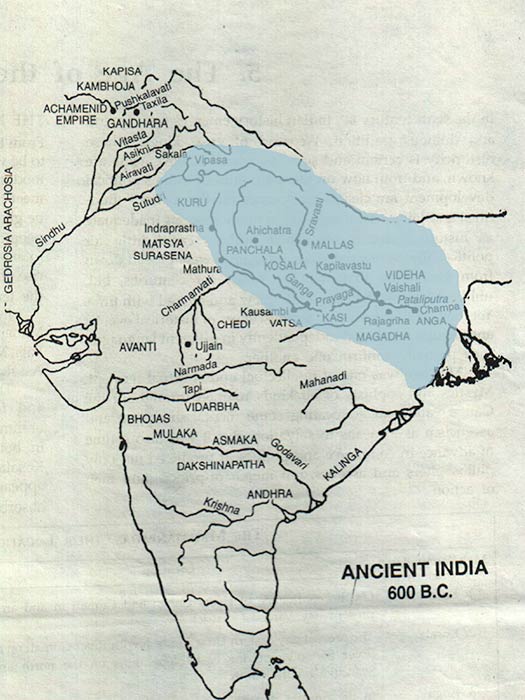
The general territory ruled over by Ajatashatru, second king of the Haryanka dynasty. (Coolnim / CC BY 3.0 )
Primary Historical Facts Related To Ajatashatru
Here are the primary facts related to this story. Ajatashatru (c. 492 BC-460 BC) was probably the second king of the Haryanka dynasty. The Haryanka dynasty (c. 544 BCE – c. 413 BC) was an imperial dynasty of ancient India, which came into the limelight of history when their King Bimbisara spread his influence through conquests and strategic marriage alliances. King Bimbisara’s capital was situated at a place called Girivraj, which is the modern town of Rajgir in the Indian state of Bihar. King Bimbisara’s only son was Ajatashatru.
The name Ajatashatru can be translated to mean a person who has no living enemies or a person for whom no enemies ever existed. True to his name, this ruler in Indian history made sure that nobody interfered with his chosen path, not even his own father. When Ajatashatru was born, Bimbisara was overjoyed to have a son. However, legend has it that the birth of this prince was preceded many bad omens.
And at one point, the Haryanka dynasty court priests supposedly warned Bimbisara of the peril that his son would bring upon him eventually. But Bimbisara obviously did not listen to them. Instead, he opted for an ill-omened son rather than no son at all. This trait in India of vying desperately for a male heir has continued to this day. But to really understand the story of the Haryanka dynasty it is important to consider the political background of the Magadha kingdom that preceded prince Ajatashatru’s birth.
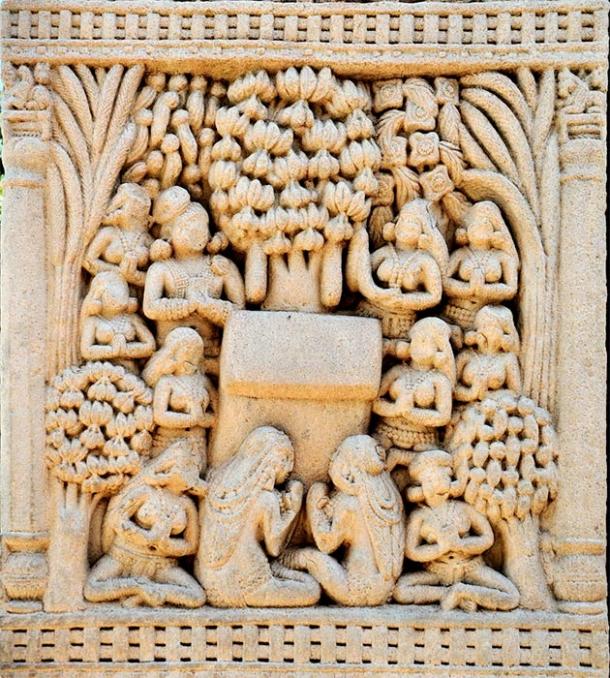
King Bimbisara of the Magadhan Haryanka dynasty visiting the Venuvana bamboo garden in Rajagriha. (Biswarup Ganguly / CC BY 3.0 )
The World Of King Bimbisara In Northeastern India
King Bimbisara ascended the throne at a very young age around the year 544 BC. The Indian sub-continent around that time was divided into two major political units, the Mahajanapadas and the Janapadas. In both cases, these huge political forces were ruled by monarchs or a committee of important citizens.
The Mahajanapadas was made up of 16 different political entities during Bimbisara’s time. When Bimbisara ascended to the throne, the political activities of the Indian sub-continent slowly shifted its focus to eastern and central India with four kingdoms controlling the majority of the power bases. Those kingdoms were the Kosala (some parts of modern-day Uttar Pradesh), the Avanti (modern-day Madhya Pradesh), the Vatsa (Uttar Pradesh), and the Magadha (parts of modern-day eastern India including Bihar, Jharkhand, and some parts of Odisha and Bengal).
The Janapadas were realms, republics and kingdoms during the Vedic period (1500-500 BC) on the Indian subcontinent. In the Vedic world, the term jana denotes a tribe, whose members believed in a shared ancestry. The janas were headed by a king. The janas began as semi-nomadic pastoral communities that gradually became associated with specific territories as nomadic mobility decreased. By Bimbisara’s reign, defense and warfare needs of the janas resulted in military groupings.
True to the spirit of that age, King Bimbisara was a warrior and preferred battles to peace. He saw his father humiliated during his childhood while trying to capture the commercial hub of Anga (present-day coastal Bengal). That kingdom would have given immense riches to any conqueror due to its prosperous river and sea trading empire. Therefore, Bimbisara tried to completely annex Anga through battle. In the other kingdoms he used strategic marriage alliances to enforce his power and influence.
Bimbisara brought up his son with much love and care like a true father. He gave him every kind of training to become a successful monarch. When Ajatashatru grew up a bit, Bimbisara took him to battle against Anga to give him a first-hand experience of a real war. Bimbisara was quite confident of winning and he was known for careful preparation before any attack.
After Bimbisara won the war and annexed Anga, it became the most important province in his empire because of its rich trade wealth and its abundance of trees and minerals. These resources were key materials for waging war.
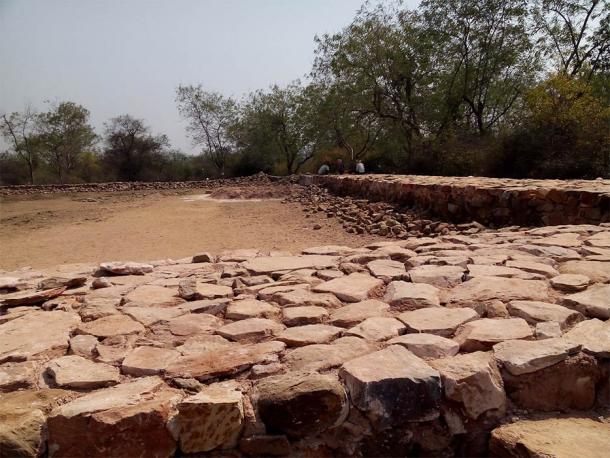
This is the place where Bimbisara was imprisoned by his son Ajatashatru. Interestingly, the “jail” site was chosen by Bimbisar himself so that he could watch the Gautama Buddha climb up to the mountain retreat at Griddhakuta hill every day. (Venkygrams / CC BY-SA 4.0 )
Father Gives His Son Power And The Son Betrays Him
So, being the caring and astute father that he was, Bimbisara made Ajatashatru the governor of Anga, as a way for his son to learn about ruling other people. Ajatashatru should have been the happiest person to be given control of such an important region. He should have also been grateful to his father for everything that his father had done for him until then. But bad nature doesn’t listen to logic.
This young prince was greedy and cruel, and his ambition knew no bounds. Ajatashatru should have also known by that time that he was the only direct heir to his father. He would have inherited the Haryanka dynasty throne because no one stood in his way. But conspiracy brewed in his mind. He felt isolated and suspicious that he was sidelined to Anga.
As a young man, he was also vulnerable to outside influences. According to historical sources, the young prince Ajatashatru received a lot of bad advice from Devadatta, who was a cousin of the Gautama Buddha. Devadatta was a monk but did not have the qualities of wisdom one would expect from a monk. He was jealous of the growing influence of his cousin Gautama who held a very prominent place in the heart and mind of Bimbisara. Devadatta judged the great Buddha according to his own greedy standards and coveted a place in the imperial court which he thought was not possible if Bimbisara was to rule.
When Bimbisara became a follower of Gautama Buddha, some people assumed that the Buddha would become a priest in the royal court. To prevent this, Devadatta continuously fed the young and susceptible Ajatashatru with false information so that we would rebel against his father and take the throne.
Ajatashatru listened to Devadatta and suddenly attacked his father with forces raised in Anga. Historical sources do not really describe this act of betrayal. Bimbisara was probably too surprised to act against his own son and heir. So, he was defeated and imprisoned. The opinions of experts vary on whether he was executed or took his own life while in prison. Bimbisara’s chief queen also passed around this time out of shock.
Bimbisara, despite all his intelligence, was also a true Indian father, who was blindly in love with son. He never monitored Ajatashatru and believed his son was happy and thriving in Anga. Obviously, he was wrong, and this changed everything for the Haryanka dynasty.
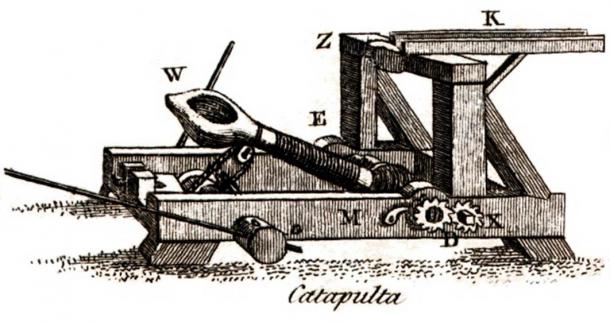
Ajatashatru used catapults in his battles against his enemies. (Francis Grose / Public domain )
Ajatashatru Betrayed And Killed Many People
Ajatashatru didn’t just betray and “kill” his father. He also created a precedent in that era of ambition at any cost, including betraying or killing family members. The brother of Bimbisara’s chief queen, King Prasanajita, battled with Ajatashatru when he attacked Prasanajita’s kingdom of Kosala. The senior Prasanajita defeated Ajatashatru easily, and then spared his life. However, the mighty Prasanajita was himself likely killed by his own son, who was probably “inspired” by Ajatashatru’s treachery against his own father.
Ajatashatru easily defeated Prasanajita’s son and annexed Kosala. He then used his cunning and defeated the confederation of the Vrijjis (related to his mother’s clan) through more treachery.
Apart from being cruel and ambitious, Ajatashatru’s appetite for conquest was unquenchable and he was a very powerful warrior. Ajatashatru left his mark on the Haryanka dynasty as a cursed, bloody and ruthless dynasty that is known today all over India.
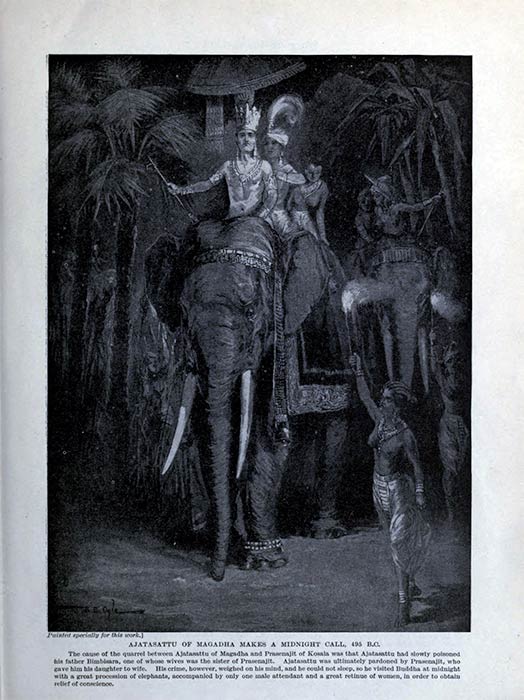
Ajatashatru later in life when he repents his treachery and betrayal and looks for guidance from the Gautama Buddha. ( Public domain )
However, in later life, Ajatashatru repented and took the refuge in the wisdom of the Gautama Buddha. But, as we all know, crime never pays. Ajatashatru not only lived a life of repentance and guilt: he was likely deposed and probably killed by his own son Udaya (or Udayin). Udaya was later killed in a battle and from then onward historical sources about the Haryanka dynasty seem to fade away.
However, some Buddhist chronicles state that all the kings of the Haryanka dynasty from Ajatashatru to Nagadasaka killed their fathers to gain the throne. There is no way to prove otherwise. But what is really important is that the height of betrayal in modern India today will always be connected with Ajatashatru and his evil deeds.
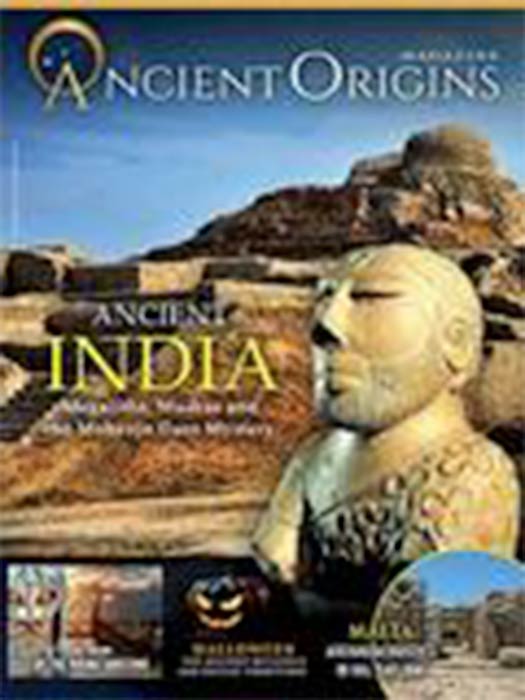 Given the insatiable appetite for all-things ancient Egypt and Mesopotamia, it is somewhat of a surprise that so little is known or shared about a mysterious civilization that emerged in the Indus Valley at least 5,000 years ago in what is now Pakistan and India. With impeccably-planned cities such as Mohenjo Daro and Harappa, advanced hydraulic engineering, precise measuring systems, impressive metallurgy, and an intriguing writing that remains undeciphered, the Indus Valley civilization was every bit as impressive as their ancient Egyptian counterpart. This Ancient Origins Magazine India Special explores it all. Find it here.
Given the insatiable appetite for all-things ancient Egypt and Mesopotamia, it is somewhat of a surprise that so little is known or shared about a mysterious civilization that emerged in the Indus Valley at least 5,000 years ago in what is now Pakistan and India. With impeccably-planned cities such as Mohenjo Daro and Harappa, advanced hydraulic engineering, precise measuring systems, impressive metallurgy, and an intriguing writing that remains undeciphered, the Indus Valley civilization was every bit as impressive as their ancient Egyptian counterpart. This Ancient Origins Magazine India Special explores it all. Find it here.
Top image: The early rulers of the Haryanka dynasty, including Bimisara and his treacherous son Ajatashatru, became followers of the Gautama Buddha, who was alive when father and son were alive. This statue is located within walking distance of Bimisara’s jail, where he died. Essentially, he was killed by his own son! Source: charnsitr / Adobe Stock
References
Thapar, R. 2015. The Penguin History of Early India – From the Origins to AD 1300 . Penguin Books Ltd.
Keay, J. 2008. India – A History . Paw Prints.
Avari, B. 2007. India: The Ancient Past — The History of the Indian Subcontinent from 7000 BC to AD 1200 . Routledge.
Related posts:
Views: 0
 RSS Feed
RSS Feed















 November 14th, 2020
November 14th, 2020  Awake Goy
Awake Goy  Posted in
Posted in  Tags:
Tags: 
















